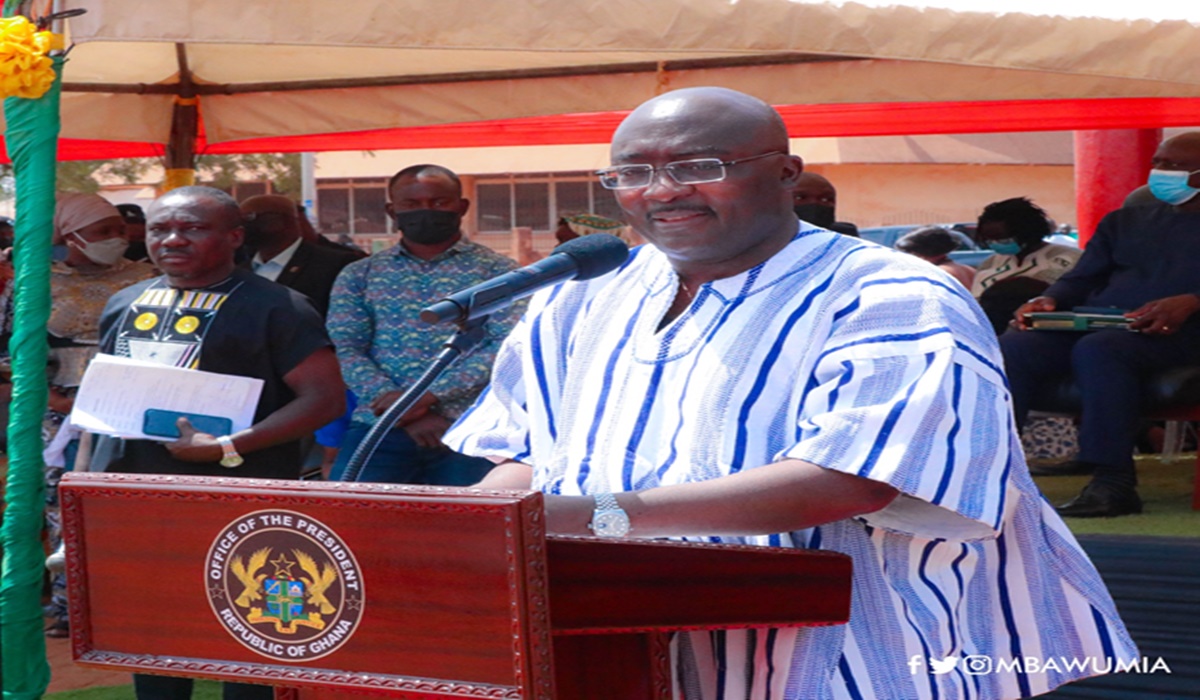The Vice President, Dr Mahamudu Bawumia, has launched the Ghana Shea Landscape Emission Reductions Project (GLSERP) with a call on the chiefs and people of the five northern regions, especially farmers, to “own it” and ensure its success.
The $54.5 million GLSERP project seeks to mitigate the effects of climate change on the fragile ecosystem of the Northern Savannah Landscape as well as improve the shea value chain, especially for the hundreds of thousands of women engaged in the entire value chain.
Performing the launch in Tamale on Friday, February 11, 2022, Vice President Bawumia said the Shea Landscape Project will be the second emission reductions programme to be implemented under the REDD+ process in Ghana, after the Ghana Cocoa Forest REDD+, and focuses on the northern landscapes which are currently undergoing rapid deforestation and degradation including the loss of valuable shea trees.
“The GSLERP therefore provides a unique opportunity to engage on a bigger scale in the Shea commodity and its by-products, which are an important income generating activities for over 600,000 women and has gained prominence as a preferred ingredient in the cosmetics and food processing industry globally,” he added.
“Ghana is currently the fourth largest producer of Shea in the world. I believe this project if successfully implemented will change this status with the planting of over 1.7 million shea trees over the 7-year project period.”
Government has since 2017, supported scientific research on the shea plant geared towards making the shea a reliable income generating product. This work, undertaken by the COCOBOD, has led to important breakthroughs, including reducing the gestation period of the shea plant from over 20 years to an average of 3 years, the Vice President disclosed.
It is against this background that the government committed in the 2022 budget statement to embark on projects and programme that will promote the cultivation of shea in the north, just as cocoa in the south, to transform the local economies of the shea region.
“The implementation of GSLERP is crucial. This is so because the project addresses about nine Sustainable Development Goals, including goals on; no poverty, zero hunger, gender equality, economic growth, climate action and life on land.
“This project will address at first-hand the financial constraints of shea farmers, ensure that gender equality prevails in shea-production systems, promote the business development of shea farming among natives, and cause a decreased deforestation and enhance fire management covering almost 500,000 hectares.”
It is estimated that the Ghana Shea Landscape Emission Reductions Project will achieve 6.1 million tonnes in emission reductions and removals over the first seven years of the project’s lifetime and 25 million tonnes in emission reductions over 20 years.
“This can only be achieved when stakeholders fully commit to the project at every point in time through collective ownership” Dr Bawumia stressed. “I therefore call on all stakeholders and beneficiaries of the project in the 5 regions of the north to collaborate to achieve this and build ecosystem resilience.
“Government will continue to create a climate responsive atmosphere through the right policy, technical and financial commitments.
“I also entreat everyone here to support this project and all other climate related projects and programmes in our communities. Finally, I appeal to all farmers especially Shea smallholder farmers and local communities, to own this programme and contribute to its success.”
The Minister for Lands and Natural Resources, Hon Samuel Abu Jinapor, expressed Government’s gratitude to the chiefs for banning the harvesting of wood and the burning of same into charcoal, saying it would go a long in the fight against climate change. His Ministry, he assured, would also continue with aggressive afforestation programmes.

